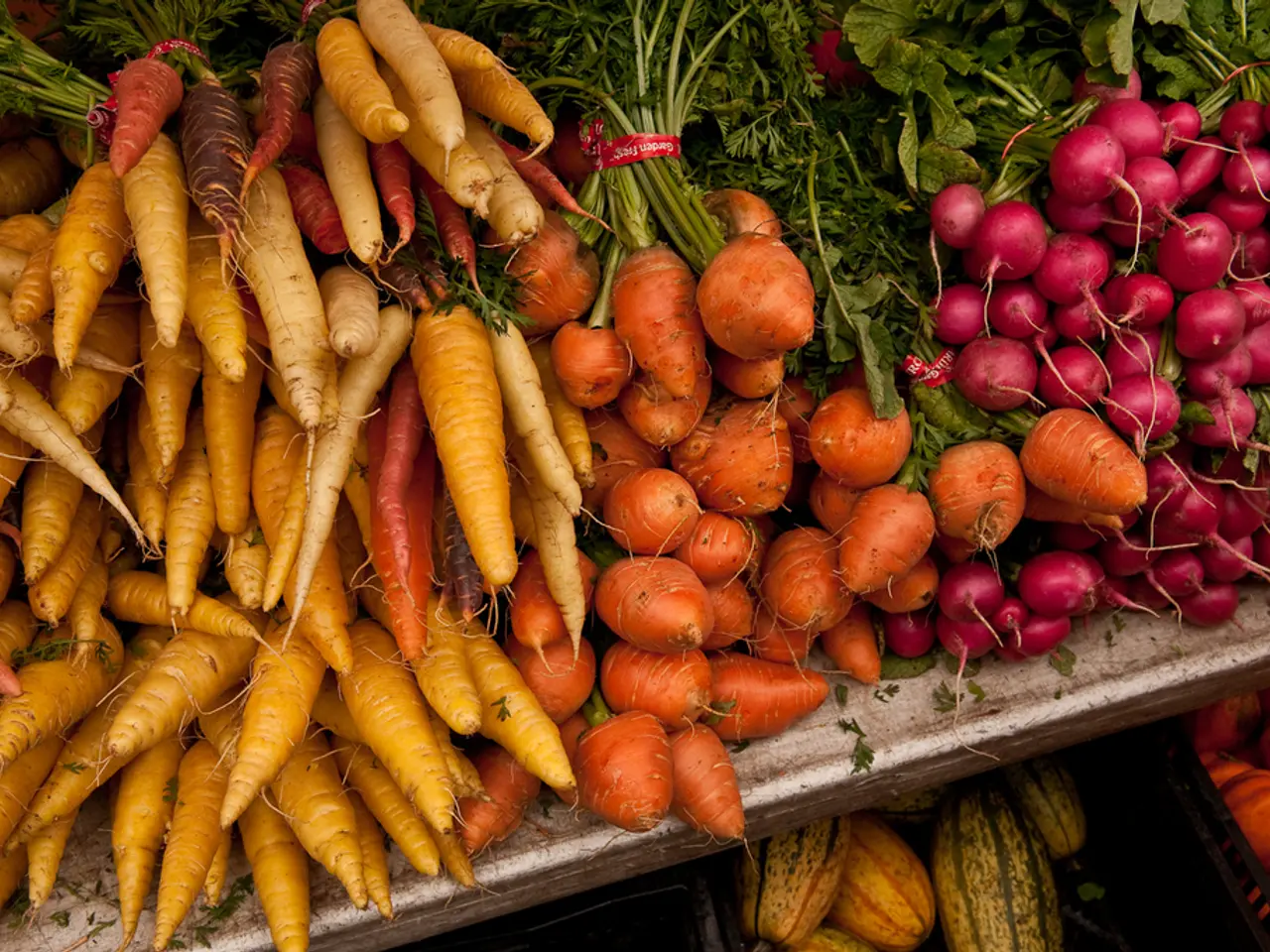Top 12 Natural Pest-Deterring Plants Suggested for Bean Cultivation to Enhance Growth
In the realm of sustainable gardening, a centuries-old practice known as the "Three Sisters" planting method is gaining renewed attention for its ability to promote resilient and highly productive gardens. This age-old technique, originating from Indigenous American agriculture, leverages the natural relationships between three key crops – beans, corn, and squash – to create a mutually beneficial ecosystem.
Beans, as legumes, are renowned for their ability to fix atmospheric nitrogen into the soil, enriching it with essential nutrients that promote the growth of neighbouring plants like corn and squash. Corn, in turn, acts as a sturdy support for climbing varieties of beans (pole beans), enabling vertical growth that conserves garden space and allows more plants in a given area. Squash plants, with their large leaves, provide ground cover that shades the soil, helping to retain moisture and suppress weeds, creating a better growing environment for all plants involved.
Marigolds, herbs like basil and parsley, calendula, nasturtiums, summer savory, and even celery are also excellent companions for beans. Marigolds, for instance, deter pests such as whiteflies and aphids that commonly attack beans, acting as natural pest repellents and reducing the need for chemical pesticides. Summer savory repels bean beetles and improves the flavour and overall growth of bean plants. Calendula attracts beneficial insects and provides natural pest control through its aromatic compounds, while nasturtiums serve as effective trap crops, attracting harmful insects away from bean plants.
Cucumbers, radishes, carrots, and chard also play their part in this symbiotic garden ecosystem. Cucumbers help suppress weeds around bean plants, while radishes break up compacted soil, improving drainage and aeration for bean root systems. Carrots help improve drainage in heavy clay soils for bean plants, and chard's deep roots access nutrients from lower soil layers, making them available to the shallower bean roots.
Swiss chard's large leaves help suppress weeds around bean plants, and its colourful stems add visual interest to companion plantings. Moreover, certain herbs like basil and parsley deter pests, attract beneficial insects, and add diversity to the garden ecosystem around beans, improving overall productivity.
By employing the Three Sisters planting method, gardeners can cultivate a thriving, self-sustaining garden that not only enhances soil fertility, reduces pests, optimizes space, and increases overall productivity but also pays homage to the rich agricultural traditions of the past.
Incorporating herbs like basil and parsley into home-and-garden settings, particularly in gardens employing the Three Sisters planting method, not only offers diversity and aesthetic appeal but also deters pests and encourages beneficial insects, thereby contributing to a more productive lifestyle. Additionally, the utilization of marigolds, calendula, nasturtiums, summer savory, and celery as companions for beans in this technique provides natural pest control solutions, supporting a sustainable and resilient lifestyle in home-and-garden environments.




